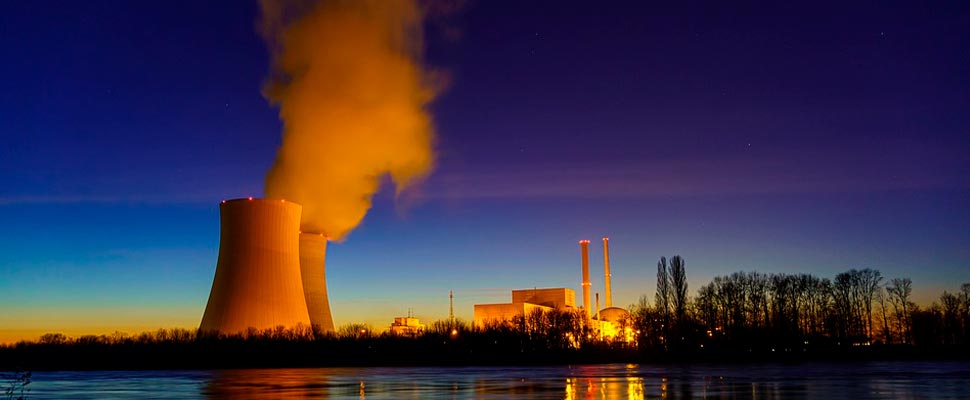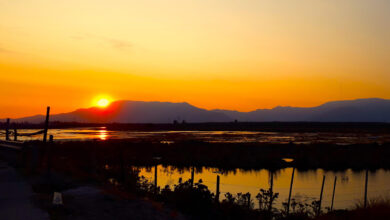Will 4th generation nuclear reactors change the public perception of nuclear power?
The new generation of nuclear reactors promises improvements that could renew the use of this energy in the world.

Nuclear power, which seemed to be in decline, especially after 2011, has managed to stay afloat and with projects on the horizon. Photo: Pixabay
LatinAmerican Post | Luis Hernández Liborio
Escucha este artículo
Leer en español: ¿Cambiarán los reactores de 4a. generación el rostro de la energía nuclear?
While nuclear fusion reactors are still a distant dream, nuclear fission reactors are reluctant to die. The first thing you should know about the latter is that the fourth generation is in the last stage of becoming a reality. Nuclear power, which seemed to be in decline, especially after 2011, has managed to stay afloat and with projects on the horizon. Why is it important to talk about them? Didn't we learn about the "dangers" of nuclear power?
What are Fourth Generation nuclear fission nuclear reactors?
Basically, nuclear fission reactors work by dividing the nuclei of heavy atoms into light ones thanks to the action of a neutron. This division produces new neutrons that will find other nuclei that will be divided by multiplying said reaction, this process is called "chain reaction", according to the definition of the Nuclear Safety Council of Spain. This division produces large amounts of energy that nuclear power plants use to produce electricity, that is, it occurs in a controlled manner. When it occurs out of control it becomes a nuclear explosion.
The nuclear fusion so dreamed of occurs by a contrary process, seeking to unite atoms instead of dividing them. The advantage is that less polluting elements with greater availability on the planet can be used, on the other hand, when it comes to nuclear fission there are few elements suitable for it and they are highly polluting. So far the most advanced project on nuclear fusion is ITER , where 35 countries collaborate to make it a reality in a stable and sustainable way in the long term.
SABÍAS QUÉ | Mediante #fusión nuclear bastaría con 1 LITRO de agua para abastecer las necesidades energéticas de la vida de un ser humano Al sur de #Francia se desarrolla el proyecto #ITER para aprovechar la que será la fuente energética del futuro#EnergyEfficiencyChallenge pic.twitter.com/Znzhv8hfCn
— LaBioHuella (@LaBioHuella) October 28, 2019
Meanwhile, 14 countries have worked since 2000 on more modern, efficient, small, cheap, environmentally friendly, and above all safe nuclear fission reactors. France and the United Kingdom participate in Europe, Argentina and Brazil participate in Latin America in this project, which is an initiative of the United States Department of Energy . These new generation reactors are projected to operate from the year 2030, that is, in less than a decade.
You can also read: Nuclear energy in China, animal cloning and more environmental news
It seems like a confusing message, some countries are betting on new-generation nuclear power plants, while others are dismantling them, just look at Spain and Germany. The latter country has proposed to close all its nuclear power plants before 2022, one year after that limit, only six remain in operation, according to the newspaper La Vanguardia . The Chernobyl and Fukushima cases have created debates over the past three decades about the relevance of nuclear power, whether the benefits outweigh the risks. However, this type of energy is not static as it is constantly evolving and improving. The different generations of nuclear power plants have been improving over the years on their materials, safety processes, size, costs, waste management and their impact on the environment.
And the environment?
In 2002, six technology proposals were chosen for the new generation of nuclear reactors. This was achieved after two years of analysis and deliberation among hundreds of proposals, according to information from the World Nuclear Association.
Generation IV Nuclear Reactors.
An international task force is sharing R&D to develop six nuclear reactor technologies for deployment between 2020 and 2030. Four are fast neutron reactors.All of these operate at higher temperatures than today's reactors.https://t.co/8tD7kjNrst pic.twitter.com/yw5WpdiN2I— Benjamin (@supersteak) March 6, 2019
There are two great concerns that nuclear energy has constantly produced: safety and pollution. 2011 was a crucial year for nuclear power, the accident in Fukushima contaminated the surrounding area. This radioactivity will be present for thousands of years in that area, in addition, there is the problem of contaminated water that, according to Deutsche Welle , Japan plans to release into the sea soon. That is one of the challenges that fourth generation reactors face, the efficient management of nuclear waste and safety.
The World Nuclear Association states that there are approximately 440 nuclear reactors generating electricity in the world, these produce around 10% of the electrical energy consumed on the planet. It also adds that another 50 reactors are under construction. According to Renew Economy magazine, Dr. James Hansen, a scientist known for his work on climate change and for his opposition to non-renewable energy projects, has given his opinion. He stated that if we want to eliminate fossil fuels by 2050 and the fourth generation reactors begin construction in 2030, it would take 200 new reactors each year from 2030 to 2050 to reach a goal of 4,000, something that looks complicated, however Hansen is optimistic about nuclear power. In short, despite all its advantages, nuclear energy appears destined to represent a small percentage and not a real alternative to fossil fuels.
Dr. James Hansen: #Nuclear Power has Contributed More to Reducing Mortality Than Any Other Energy Sourcehttps://t.co/HxKUCOR2n0#uranium #thorium pic.twitter.com/HOft4f4V7b
— Jim Haysson (@jrth232) August 16, 2018




